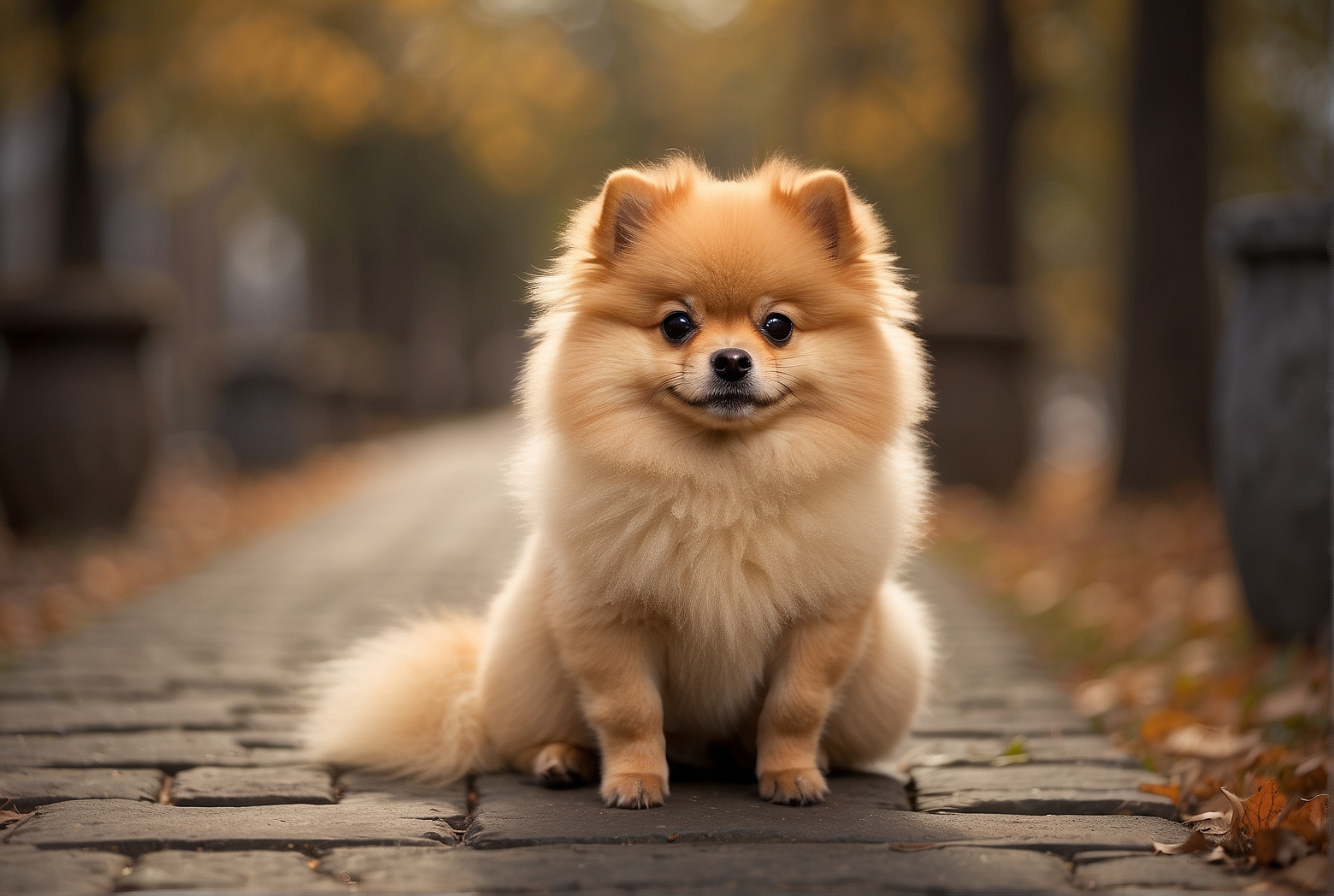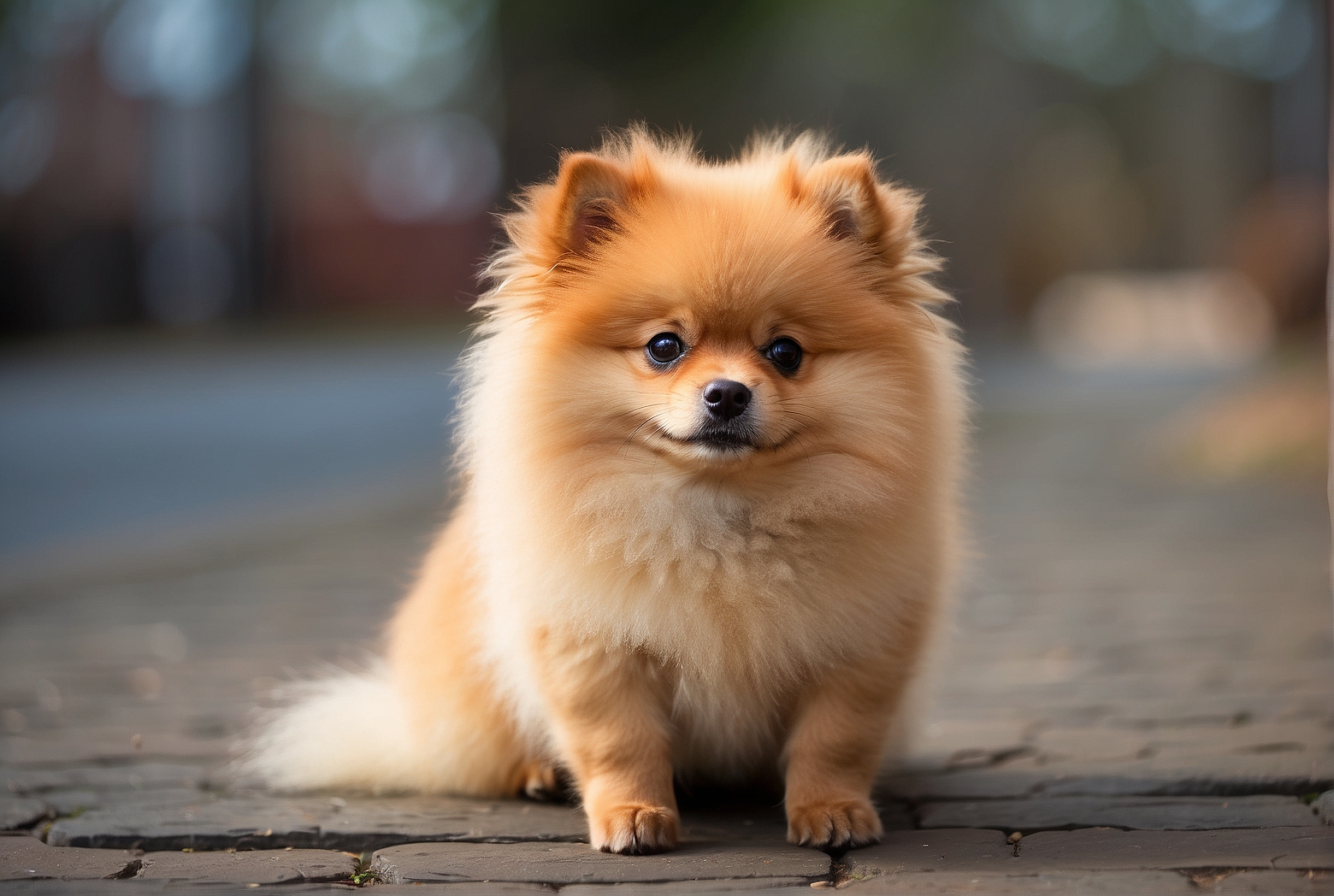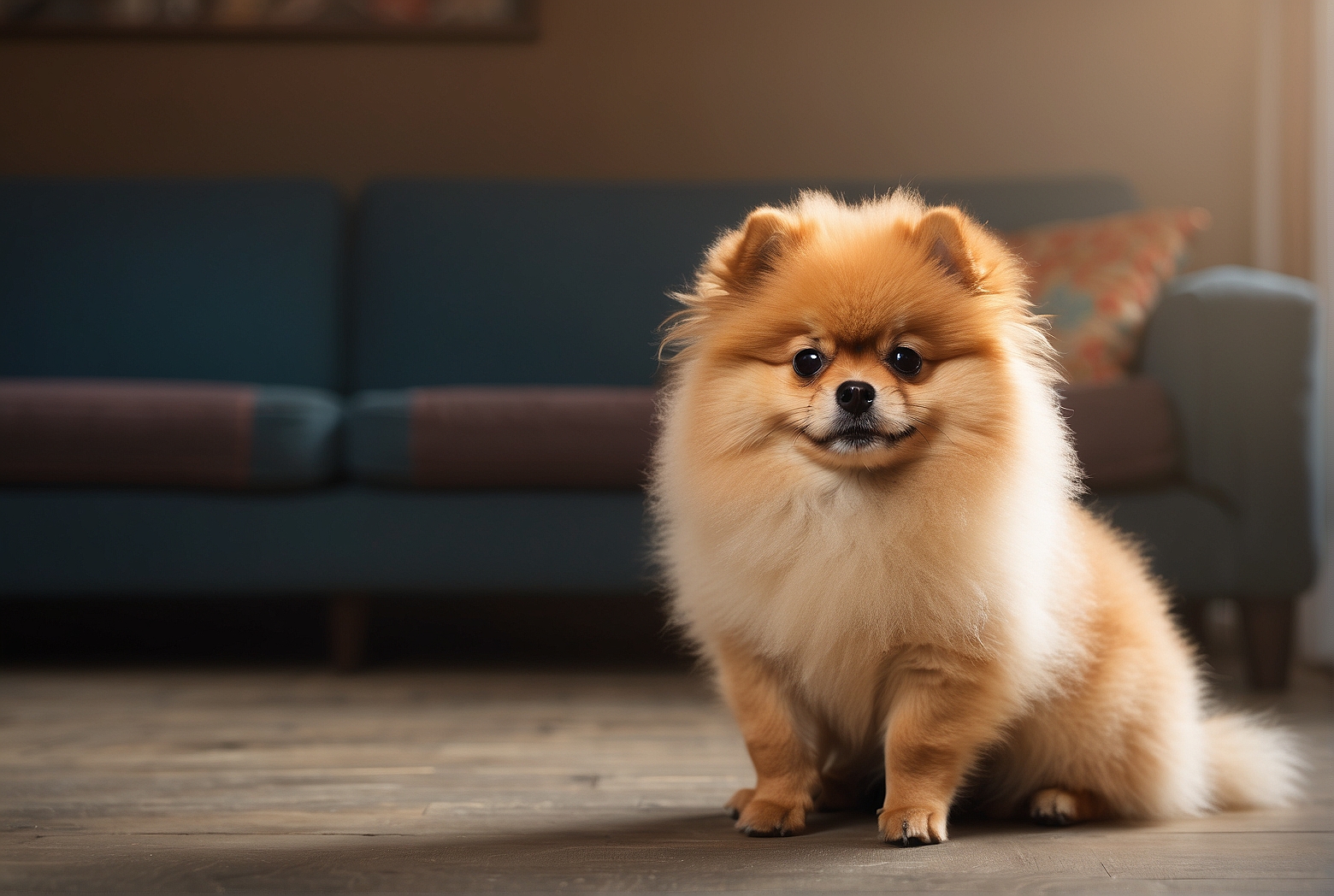Imagine snuggling up with a fluffy ball of fur on a cold winter’s night. But how long is the fur of a Pomeranian? This adorable small breed is known for its luxurious, voluminous coat, but just how much hair are we talking about here? In this article, we’ll explore the length of Pomeranian fur and discover what makes these dogs so irresistibly cuddly. Get ready to be amazed by the beauty and charm of these pint-sized fluffballs and learn why their fur is the envy of dogs everywhere.
Introduction to the Pomeranian breed
Pomeranians are small, fluffy dogs known for their vibrant personalities and adorable appearance. If you are considering getting a Pomeranian or already own one, it is essential to understand the breed’s unique characteristics, including their coat length and how to properly care for it. In this article, we will explore the origin and history of the Pomeranian breed, as well as delve into the factors that affect their coat length. We will also discuss the different types of Pomeranian coats, the fur growth cycle, and provide tips for maintaining a healthy coat. Additionally, we will address common grooming methods, shedding, and potential health issues related to Pomeranian fur.
Origin and history of the Pomeranian breed
The Pomeranian breed originated in the Pomerania region, which was located in present-day Poland and Germany. These small dogs were initially bred as working dogs and were larger and more robust than the Pomeranians we see today. It wasn’t until the 19th century, when Queen Victoria of England became enamored with the breed, that their popularity soared. Queen Victoria played a significant role in reducing the breed’s size through selective breeding, resulting in the small and compact Pomeranians we know and love today.
Physical characteristics of Pomeranians
Pomeranians are known for their luxurious coats and foxy faces, which contribute to their overall charm. They have a distinctive double coat consisting of a dense undercoat and a long, profuse outer coat. Their coats come in a variety of colors, including orange, cream, black, blue, white, and sable, among others. Pomeranians have a plume-like tail that arches over their back, adding to their distinguishing appearance. With their small and compact bodies, they typically weigh between three and seven pounds and stand between six and seven inches tall at the shoulder.
Factors affecting Pomeranian coat length
The length of a Pomeranian’s fur is influenced by several factors, including genetics and overall health and nutrition. Understanding these factors is crucial in maintaining a healthy coat for your beloved Pom.
Genetics
Genetics play a significant role in determining the length of a Pomeranian’s coat. The genes inherited from their parents determine whether they will have a long or short coat. Pomeranians with parents who have long, luscious coats are more likely to have long coats themselves. Conversely, if both parents have shorter coats, their offspring are more likely to have shorter coats as well.

Overall health and nutrition
The overall health and nutrition of a Pomeranian also contribute to the length and quality of their coat. A balanced diet rich in essential nutrients, vitamins, and minerals is essential for optimal coat growth and maintenance. Nutritional deficiencies can lead to brittle, dry fur, which may affect its length. Regular veterinary check-ups and ensuring your Pomeranian is in good health will help maintain a lustrous and healthy coat.
Types of Pomeranian coats
Pomeranians can have either a single coat or a double coat. The type of coat they have will determine its texture, thickness, and how frequently grooming is needed.
Single coat
Pomeranians with a single coat have a smoother and shorter layer of fur. Their fur tends to be softer and less dense compared to those with a double coat. Single-coated Pomeranians typically require less grooming and may not experience as much shedding as their double-coated counterparts.
Double coat
The double coat is the most common type of Pomeranian coat. It consists of a soft, dense undercoat and a longer, harsher outer coat. The double coat provides excellent insulation, protecting the Pomeranian from both cold and hot temperatures. However, this type of coat requires regular grooming to prevent tangles and mats and to maintain its overall health and appearance.
Different coat colors
Pomeranians exhibit a wide range of coat colors, adding to their unique and diverse appearance. Common coat colors include orange, cream, black, blue, white, sable, and brindle. Some Pomeranians may also have parti-color coats, which feature combining two or more colors in patches.
Understanding the Pomeranian fur growth cycle
To grasp how long it takes for a Pomeranian’s fur to grow, it is essential to understand the fur growth cycle, which consists of three phases: anagen, catagen, and telogen.

Anagen phase
The anagen phase is the active growth phase of the hair follicles. During this phase, the hair shaft is growing, and the hair follicles are actively producing new hair. The duration of the anagen phase determines the maximum potential length a Pomeranian’s fur can reach.
Catagen phase
The catagen phase follows the anagen phase and is a transitional period where hair growth stops. The hair shaft’s connection to the hair follicle weakens during this phase, preparing for the shedding of the old hair.
Telogen phase
The telogen phase is the resting phase of the hair follicles. During this phase, the old hair remains in place while new hair starts growing underneath it. Shedding occurs when the new hair pushes out the old hair, initiating a new hair growth cycle.
How long does it take for a Pomeranian’s fur to grow?
The duration of the fur growth cycle in Pomeranians can vary, but on average, it takes about three months for fur to grow from the anagen phase to the shedding phase.
Average duration of the fur growth cycle
The average duration of the fur growth cycle, from the initial growth phase to shedding, is approximately three months. However, it’s important to note that individual dogs may exhibit variations in their hair growth cycles. Some dogs may have shorter or longer cycles, which can affect the overall length of their fur.
Factors influencing the duration
Several factors can influence the duration of a Pomeranian’s fur growth cycle. These include age, genetics, overall health, diet, and environmental factors. Young Pomeranians typically have shorter hair growth cycles, while older Pomeranians may experience longer cycles. Genetic factors, such as the parents’ coat length, can also influence the duration of the growth cycle.
Tips for maintaining a healthy Pomeranian coat
Maintaining a healthy coat is essential for the well-being and appearance of your Pomeranian. Here are some tips to help you keep your Pomeranian’s coat in top condition.
Regular grooming
Regular grooming is crucial for preventing tangles, matting, and maintaining a healthy coat. Brushing your Pomeranian’s fur daily or every other day helps remove loose hair, keeps the coat clean, and stimulates the skin. It also allows you to check for any signs of skin issues or parasites.
Proper nutrition
Proper nutrition is vital for maintaining a healthy coat. Ensure your Pomeranian’s diet includes high-quality dog food suitable for their age and size. Consider incorporating foods rich in omega-3 fatty acids, such as fish or fish oil supplements, to promote healthy skin and a shiny coat. Consult with your veterinarian to determine the most suitable diet for your Pomeranian.
Protection from external elements
Protecting your Pomeranian from harsh weather conditions is essential. During hot weather, provide shade and ensure they have access to fresh water to prevent dehydration. In colder weather, consider using a doggie coat or sweater to keep them warm. Additionally, protect their paws from ice, salt, and chemical deicers by using dog booties or paw wax.
Common grooming methods for Pomeranians
Grooming is a vital part of caring for a Pomeranian’s coat. Several grooming methods can help keep their fur healthy and beautiful.
Brushing
Regular brushing is critical for removing loose hair, preventing tangles, and stimulating the skin. Use a slicker brush or a comb with wide-set teeth to gently work through the fur. Pay extra attention to the dense undercoat and areas prone to matting, such as behind the ears and under the armpits. The frequency of brushing will depend on the length and thickness of your Pomeranian’s coat.
Bathing
Bathing your Pomeranian every four to six weeks is typically sufficient unless they get particularly dirty or smelly. Use a gentle dog shampoo specifically formulated for their sensitive skin. Avoid over-bathing, as it can strip the coat of its natural oils, leading to dryness. After bathing, thoroughly dry their fur to prevent matting and skin irritation.
Trimming
Regular trimming is essential to maintain the shape and cleanliness of your Pomeranian’s coat. Focus on areas such as around the paws, anus, and eyes, where fur can become matted or cause discomfort. It is best to leave trimming to professionals unless you have experience and confidence in doing so.
Professional grooming
Consider taking your Pomeranian to a professional groomer regularly to ensure their coat is properly maintained. Professional groomers have the expertise and tools necessary to keep your Pomeranian’s coat in optimal condition, including trimming, nail clipping, and ear cleaning.
Dealing with shedding in Pomeranians
Pomeranians are known to shed moderately, and understanding the shedding process is important for managing their coat.
Understanding seasonal shedding
Pomeranians undergo a natural shedding process, also known as seasonal shedding. During warmer months, they shed their heavy winter coat to adapt to the changing temperatures. This shedding process helps them stay cool in hot weather. Regular brushing and grooming can help remove loose hair and minimize shedding.
Reducing shedding with proper care
While it is impossible to completely eliminate shedding in Pomeranians, proper care can help reduce it. Regular brushing removes loose hair, preventing it from spreading around the house. Additionally, ensuring a healthy diet, regular bathing, and adequate hydration contribute to overall coat health, which may help minimize shedding.
Potential health issues related to Pomeranian fur
Pomeranians, like any other breed, are susceptible to certain health issues related to their fur. Being aware of these issues can help ensure early detection and prompt treatment.
Skin allergies
Pomeranians can develop skin allergies that cause itching, redness, and irritation. Allergies can be triggered by various factors, including certain foods, environmental allergens like pollen or dust mites, or contact with irritants. Regular grooming and maintaining a clean environment can help prevent or minimize allergic reactions.
Hot spots
Hot spots, also known as acute moist dermatitis, are areas of inflamed and infected skin that can occur in Pomeranians. These spots are often caused by excessive licking, scratching, or chewing due to underlying allergies, infections, or other skin issues. Prompt veterinary care and proper grooming can help prevent and treat hot spots.
Knots and mats
Pomeranians with long fur are prone to knots and mats if their fur is not regularly groomed. These tangles can be uncomfortable for your Pomeranian and may even lead to skin irritation or infections. Regular brushing and proper grooming techniques can prevent the formation of knots and mats.
Parasites
Parasites, such as fleas and ticks, can cause discomfort and skin issues in Pomeranians. Regularly check your Pomeranian for any signs of parasites, and use appropriate preventative measures recommended by your veterinarian. Grooming can also help in detecting and addressing potential parasitic infestations.
Conclusion
In conclusion, the length and care of a Pomeranian’s coat are important aspects to consider for any Pomeranian owner or enthusiast. Understanding the factors that affect coat length and the different coat types allows for better maintenance and care. Regular grooming, proper nutrition, and protection from external elements play pivotal roles in ensuring a healthy and beautiful coat. By following these guidelines and being aware of potential health issues related to Pomeranian fur, you can provide the best care for your fluffy companion and keep their coat looking fabulous. Remember, a well-cared-for coat reflects the overall health and happiness of your Pomeranian.
